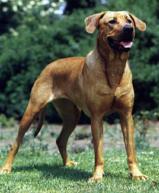
This is a placeholder text
Group text
by sonora on 03 May 2012 - 06:05
Overreach is the distance,the right hind foot steps in front
of the right front foot in full flight.
Thanks to Blitzen ,we can see it clearly in Dingo's gaiting above.
by Blitzen on 03 May 2012 - 14:05
Gait
A German Shepherd Dog is a trotting dog, and its structure has been developed to meet the requirements of its work. General Impression -- The gait is outreaching, elastic, seemingly without effort, smooth and rhythmic, covering the maximum amount of ground with the minimum number of steps. At a walk it covers a great deal of ground, with long stride of both hind legs and forelegs. At a trot the dog covers still more ground with even longer stride, and moves powerfully but easily, with coordination and balance so that the gait appears to be the steady motion of a well-lubricated machine. The feet travel close to the ground on both forward reach and backward push. In order to achieve ideal movement of this kind, there must be good muscular development and ligamentation. The hindquarters deliver, through the back, a powerful forward thrust which slightly lifts the whole animal and drives the body forward. Reaching far under, and passing the imprint left by the front foot, the hind foot takes hold of the ground; then hock, stifle and upper thigh come into play and sweep back, the stroke of the hind leg finishing with the foot still close to the ground in a smooth follow-through. The overreach of the hindquarter usually necessitates one hind foot passing outside and the other hind foot passing inside the track of the forefeet, and such action is not faulty unless the locomotion is crabwise with the dog's body sideways out of the normal straight line.
 Transmission The typical smooth, flowing gait is maintained with great strength and firmness of back. The whole effort of the hindquarter is transmitted to the forequarter through the loin, back and withers. At full trot, the back must remain firm and level without sway, roll, whip or roach. Unlevel topline with withers lower than the hip is a fault. To compensate for the forward motion imparted by the hindquarters, the shoulder should open to its full extent. The forelegs should reach out close to the ground in a long stride in harmony with that of the hindquarters. The dog does not track on widely separated parallel lines, but brings the feet inward toward the middle line of the body when trotting, in order to maintain balance. The feet track closely but do not strike or cross over. Viewed from the front, the front legs function from the shoulder joint to the pad in a straight line. Viewed from the rear, the hind legs function from the hip joint to the pad in a straight line. Faults of gait, whether from front, rear or side, are to be considered very serious faults.
Transmission The typical smooth, flowing gait is maintained with great strength and firmness of back. The whole effort of the hindquarter is transmitted to the forequarter through the loin, back and withers. At full trot, the back must remain firm and level without sway, roll, whip or roach. Unlevel topline with withers lower than the hip is a fault. To compensate for the forward motion imparted by the hindquarters, the shoulder should open to its full extent. The forelegs should reach out close to the ground in a long stride in harmony with that of the hindquarters. The dog does not track on widely separated parallel lines, but brings the feet inward toward the middle line of the body when trotting, in order to maintain balance. The feet track closely but do not strike or cross over. Viewed from the front, the front legs function from the shoulder joint to the pad in a straight line. Viewed from the rear, the hind legs function from the hip joint to the pad in a straight line. Faults of gait, whether from front, rear or side, are to be considered very serious faults.
by MuttsandMals on 04 May 2012 - 00:05
Gait: The movement is smooth, free and easy, seemingly never tiring, exhibiting facility of movement rather than a hard driving action. The Belgian Malinois single tracks at a fast gait, the legs, both front and rear, converging toward the center line of gravity, while the topline remains firm and level, parallel to the line of motion with no crabbing. The breed shows a marked tendency to move in a circle rather than a straight line. Correct gait is in accordance with the moderate angulation of the Belgian Malinois. The tendency to favor an extreme side gait in the American showing will prove detrimental to the Belgian Malinois, for this is not correct movement for this breed. R. Pollet, in the Blueprint of the Belgian Shepherd Dog, provides us with an accurate description of correct gait. "The Belgian Shepherd is active and always on the move, seeming never to tire, and typically moves about with a supple, free, firm, but not exaggerated ground-covering gait." Poor gait in the Belgian Malinois is usually related to structural faults. High action or hackney gait (due to straight shoulders) and over-reaching (due to imbalance fore and aft) are two of the most common movement faults in this breed.
And this one, which seems to have the same key points:
GAIT / MOVEMENT: Lively and free movement at all gaits; the Belgian Shepherd is a good galloper but its normal gaits are the walk and especially the trot; limbs move parallel to the median plane of the body. At high speed the feet come nearer to the median plane; at the trot the reach is medium, the movement even and easy, with good rear drive, and the topline remains tight while the front legs are not lifted too high. Always on the move, the Belgian Shepherd seems tireless; its gait is fast, springy and lively. It is capable of suddenly changing direction at full speed. Due to its exuberant character and its desire to guard and protect, it has a definite tendency to move in circles.
by Blitzen on 04 May 2012 - 13:05
by MuttsandMals on 04 May 2012 - 23:05
by BlackthornGSD on 09 May 2012 - 06:05
of the right front foot in full flight.
Shouldn't this be the distance of the right hind foot steps in front of the *left* front foot at a full trot?
"Reaching far under, and passing the imprint left by the front foot," and "The overreach of the hindquarter usually necessitates one hind foot passing outside and the other hind foot passing inside the track of the forefeet, and such action is not faulty unless the locomotion is crabwise with the dog's body sideways out of the normal straight line." http://gsdcgkc.com/about-gsds/the-breed-standard
by Ibrahim on 09 May 2012 - 09:05
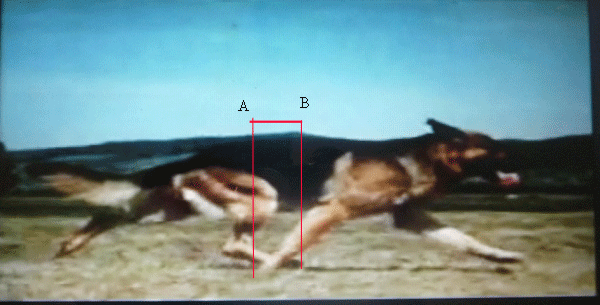
by Ibrahim on 09 May 2012 - 09:05

by Ibrahim on 09 May 2012 - 10:05
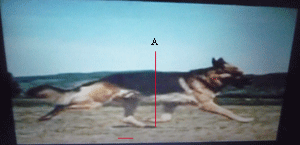
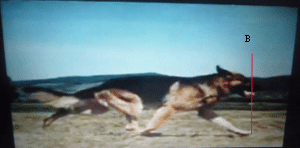
by Ibrahim on 09 May 2012 - 10:05
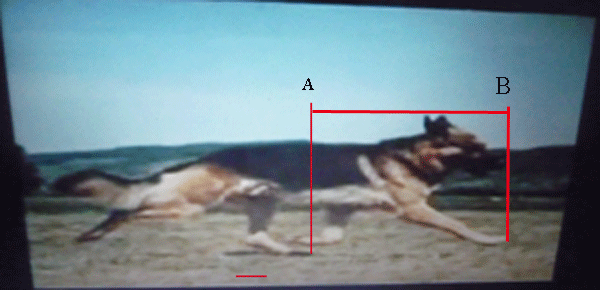
Contact information Disclaimer Privacy Statement Copyright Information Terms of Service Cookie policy ↑ Back to top
